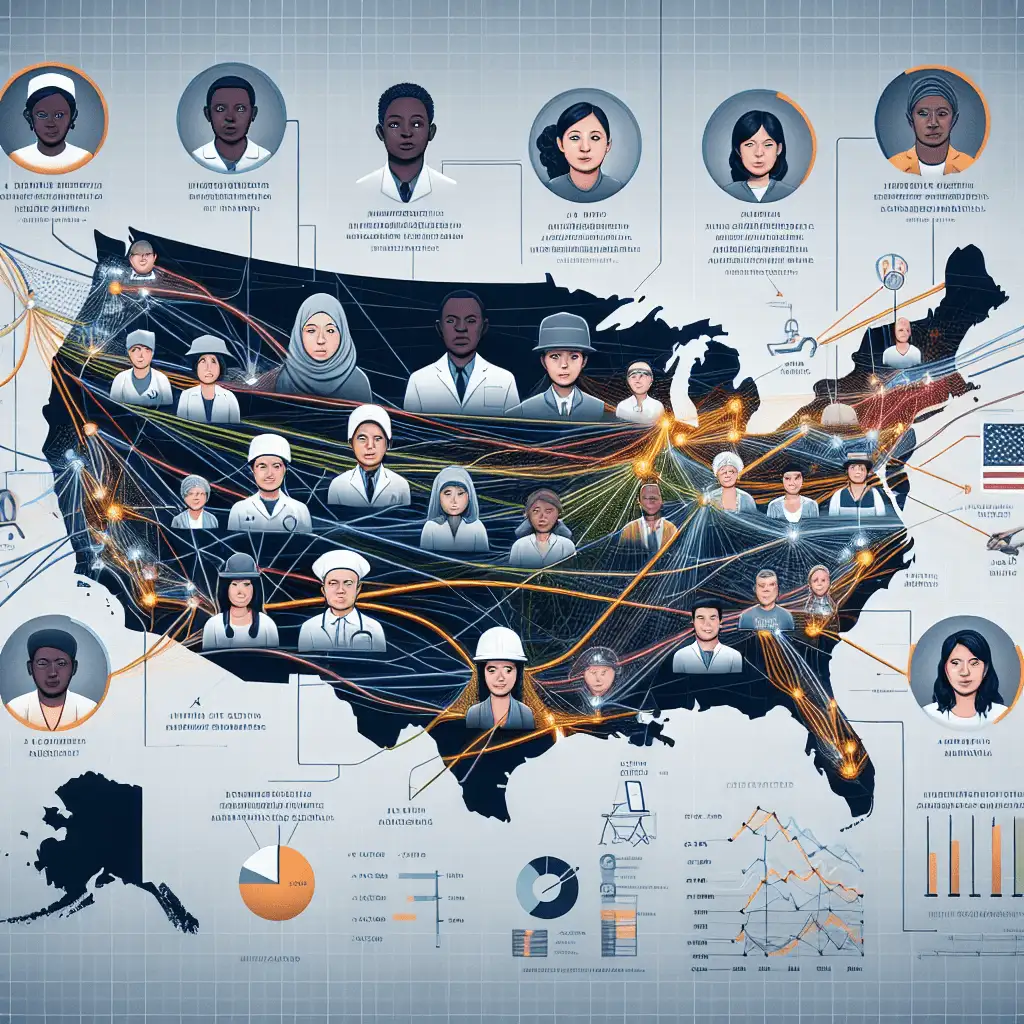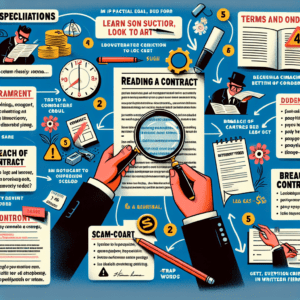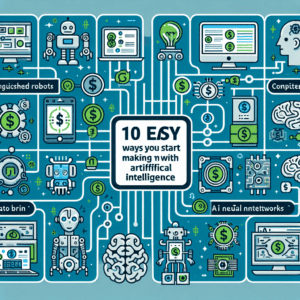“Forging the Future: How Immigration Laws Shape America’s Workforce”
Impact Of Immigration Policies On Job Market Dynamics
Immigration laws play a crucial role in shaping the American workforce, influencing job market dynamics in significant ways. As policies evolve, they affect labor supply, wage levels, and employment opportunities across various industries. The impact of these regulations extends beyond immigrant workers, influencing businesses, native-born employees, and overall economic growth. Understanding how immigration policies shape the job market requires an examination of labor force participation, industry-specific demands, and the broader economic implications of workforce shifts.
One of the most immediate effects of immigration laws on the job market is the availability of workers in key industries. Sectors such as agriculture, construction, healthcare, and technology rely heavily on immigrant labor to meet workforce demands. When immigration policies become more restrictive, businesses in these industries often struggle to fill positions, leading to labor shortages that can slow productivity and economic expansion. Conversely, when policies allow for a steady influx of foreign workers, businesses benefit from a larger talent pool, which helps maintain efficiency and competitiveness.
Moreover, immigration laws influence wage levels and employment conditions for both immigrant and native-born workers. Some argue that an increase in immigrant labor supply can place downward pressure on wages, particularly in low-skilled job sectors. However, research suggests that while there may be short-term wage adjustments, the long-term effects are more complex. Immigrants often complement rather than compete with native-born workers by filling roles that require different skill sets. This dynamic can lead to job creation and economic growth, as businesses expand and invest in new opportunities.
In addition to affecting wages, immigration policies shape workforce diversity and innovation. The presence of skilled immigrants, particularly in science, technology, engineering, and mathematics (STEM) fields, contributes to advancements in research and development. Many of the world’s leading technology companies have been founded or led by immigrants, highlighting the critical role of foreign talent in driving innovation. When immigration laws impose restrictions on high-skilled workers, companies may struggle to attract top talent, potentially leading to a decline in global competitiveness.
Furthermore, the legal status of immigrant workers significantly impacts job market stability. Policies that provide pathways to legal employment, such as work visas and residency programs, allow immigrants to participate fully in the economy. On the other hand, restrictive policies that limit work authorization can push individuals into informal labor markets, where they may face exploitation and lack legal protections. This not only affects immigrant workers but also creates challenges for businesses that rely on a stable and legally authorized workforce.
Beyond individual industries, immigration laws influence broader economic trends, including entrepreneurship and consumer spending. Immigrants contribute to the economy not only as workers but also as business owners and consumers. Many small businesses in the United States are founded by immigrants, generating employment opportunities and fostering economic growth. When immigration policies support entrepreneurship, they encourage investment and job creation, benefiting the overall labor market.
Ultimately, the impact of immigration policies on job market dynamics is multifaceted, affecting labor supply, wages, innovation, and economic stability. As the United States continues to navigate changes in immigration laws, policymakers must consider the long-term implications for the workforce and economy. A balanced approach that addresses labor market needs while ensuring fair employment practices can help sustain economic growth and maintain the country’s competitive edge in a globalized world.
Skilled Worker Visas And Their Role In The U.S. Economy

Skilled worker visas play a crucial role in shaping the American workforce, influencing both economic growth and labor market dynamics. As the United States continues to compete in a global economy, the demand for highly skilled professionals remains strong, particularly in industries such as technology, healthcare, and engineering. Immigration laws governing these visas determine the availability of foreign talent, impacting businesses, innovation, and overall economic productivity.
One of the most well-known visa programs for skilled workers is the H-1B visa, which allows U.S. employers to hire foreign professionals in specialized fields. This visa category is particularly significant in the technology sector, where companies rely on highly trained software engineers, data scientists, and IT specialists to maintain their competitive edge. However, the annual cap on H-1B visas, currently set at 85,000, often falls short of meeting employer demand, leading to a highly competitive lottery system. As a result, many businesses struggle to secure the talent they need, prompting discussions about potential reforms to expand visa availability.
Beyond the H-1B program, other visa categories also contribute to the skilled labor force. The O-1 visa, for instance, is designed for individuals with extraordinary abilities in fields such as science, education, and business. Similarly, the L-1 visa facilitates the transfer of key employees within multinational companies, allowing businesses to leverage global expertise. These visa programs help fill critical skill gaps, ensuring that U.S. companies remain at the forefront of innovation and industry leadership.
Despite the benefits of skilled worker visas, immigration policies surrounding these programs have been subject to ongoing debate. Some argue that an influx of foreign professionals may suppress wages or reduce job opportunities for American workers. However, research suggests that skilled immigrants often complement the domestic workforce rather than displace it. By bringing specialized expertise and fostering knowledge transfer, these workers contribute to economic expansion, job creation, and increased productivity. Moreover, many foreign professionals go on to establish their own businesses, further stimulating economic growth and employment opportunities.
In addition to economic considerations, immigration laws also influence the ability of the U.S. to attract and retain top global talent. Countries such as Canada and Australia have implemented immigration policies that prioritize skilled workers, making them attractive destinations for professionals seeking career opportunities. If U.S. immigration laws remain restrictive or unpredictable, there is a risk that highly skilled individuals may choose to work elsewhere, potentially weakening the country’s competitive position in key industries.
Efforts to reform skilled worker visa programs have been met with both support and resistance. Proposals to increase the H-1B visa cap, streamline processing times, or create new pathways for high-skilled immigration have been discussed in legislative and policy circles. However, balancing the interests of businesses, workers, and policymakers remains a complex challenge. While some advocate for expanding visa programs to meet labor market demands, others emphasize the need for stronger protections to ensure that American workers are not disadvantaged.
Ultimately, skilled worker visas are a vital component of the U.S. economy, shaping the workforce in ways that influence innovation, competitiveness, and long-term growth. As immigration laws continue to evolve, policymakers must carefully consider how best to harness the benefits of skilled immigration while addressing concerns about labor market impacts. The future of the American workforce will depend, in part, on how effectively these policies adapt to the changing needs of the economy.
Labor Shortages And The Influence Of Immigration Restrictions
In recent years, labor shortages have become a growing concern across various industries in the United States, with many businesses struggling to find enough workers to meet demand. At the same time, immigration laws have undergone significant changes, influencing the availability of foreign labor and shaping the composition of the American workforce. As immigration policies become more restrictive, the effects on labor markets are becoming increasingly evident, particularly in sectors that have historically relied on immigrant workers to fill essential roles.
One of the most immediate consequences of stricter immigration laws is the reduction in the number of available workers, particularly in industries such as agriculture, construction, healthcare, and hospitality. These sectors have long depended on immigrant labor to perform jobs that are often physically demanding and difficult to fill with domestic workers alone. With fewer immigrants entering the workforce due to visa restrictions, increased enforcement, and policy changes, employers are facing significant challenges in maintaining productivity and meeting consumer demand. As a result, many businesses are experiencing delays, rising labor costs, and, in some cases, an inability to operate at full capacity.
Moreover, the impact of immigration restrictions extends beyond individual businesses to the broader economy. When labor shortages persist, economic growth can slow, and inflationary pressures may increase as wages rise in response to the scarcity of workers. While higher wages can benefit American workers in the short term, they may also lead to higher prices for goods and services, ultimately affecting consumers. Additionally, industries that rely on seasonal or temporary workers, such as agriculture, are particularly vulnerable to disruptions caused by visa limitations and delays in processing work permits. Without a sufficient workforce, farmers may struggle to harvest crops on time, leading to food supply chain disruptions and potential losses for both producers and consumers.
Furthermore, immigration laws influence not only the number of workers available but also the skill composition of the labor force. Policies that prioritize high-skilled immigration while restricting lower-skilled workers can create imbalances in the job market. While there is a strong demand for highly educated professionals in fields such as technology and healthcare, there is also a critical need for workers in essential but lower-wage occupations. When immigration policies fail to address these diverse labor needs, gaps in the workforce can persist, exacerbating shortages in key industries.
In response to these challenges, some policymakers and business leaders have advocated for reforms that would allow for a more flexible and responsive immigration system. Proposals such as expanding temporary work visa programs, streamlining the legal immigration process, and creating pathways for undocumented workers to obtain legal status have been suggested as potential solutions to alleviate labor shortages. However, immigration policy remains a highly debated issue, with differing perspectives on how best to balance economic needs with national security and social concerns.
Ultimately, the relationship between immigration laws and labor shortages underscores the complex interplay between policy decisions and economic realities. As the American workforce continues to evolve, finding a sustainable approach to immigration that supports both businesses and workers will be essential in ensuring long-term economic stability and growth. Addressing these challenges will require thoughtful policy discussions and a willingness to adapt to the changing needs of the labor market.
















